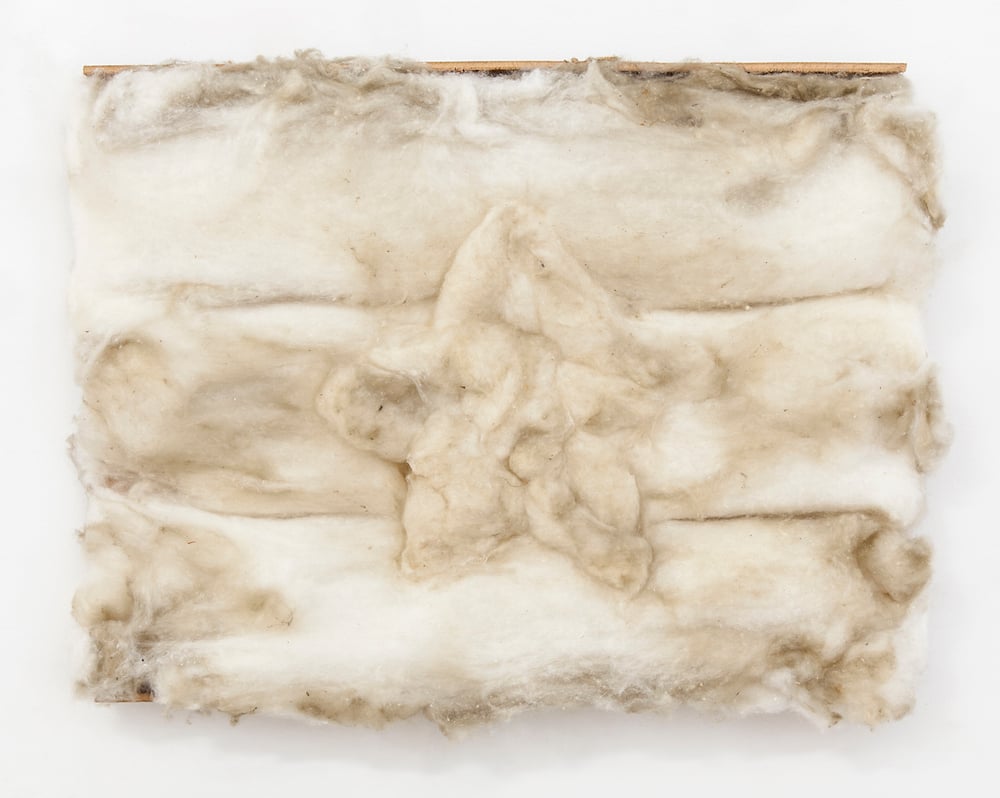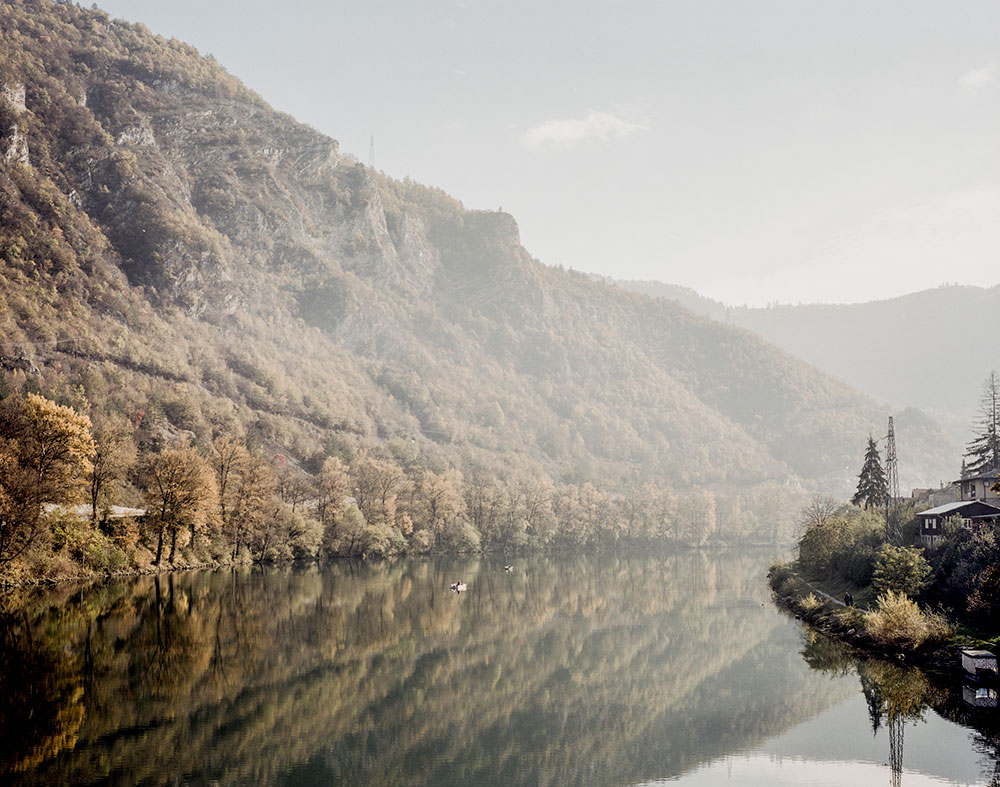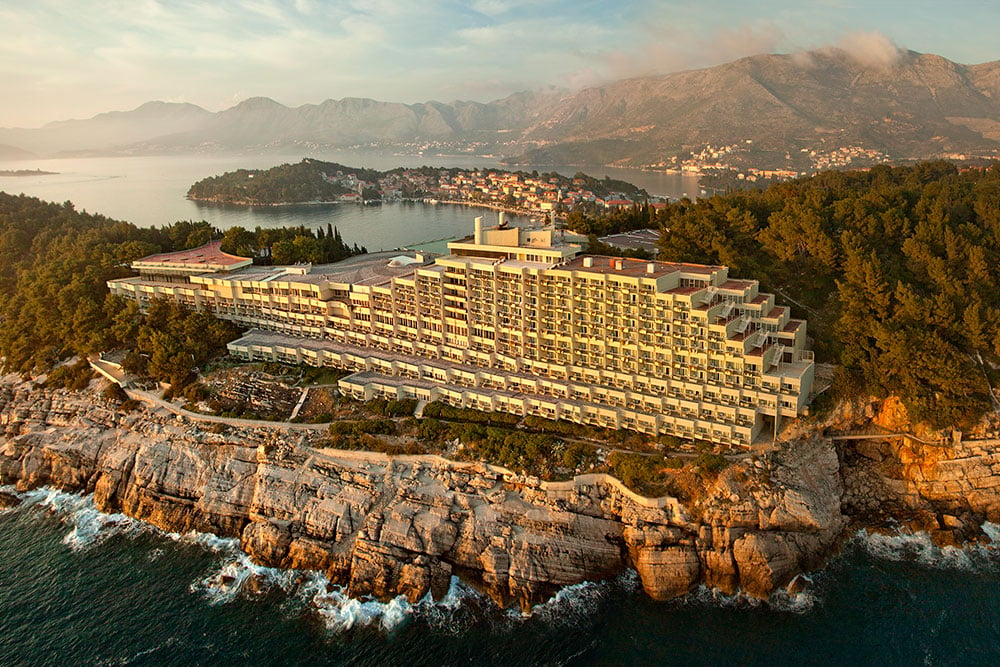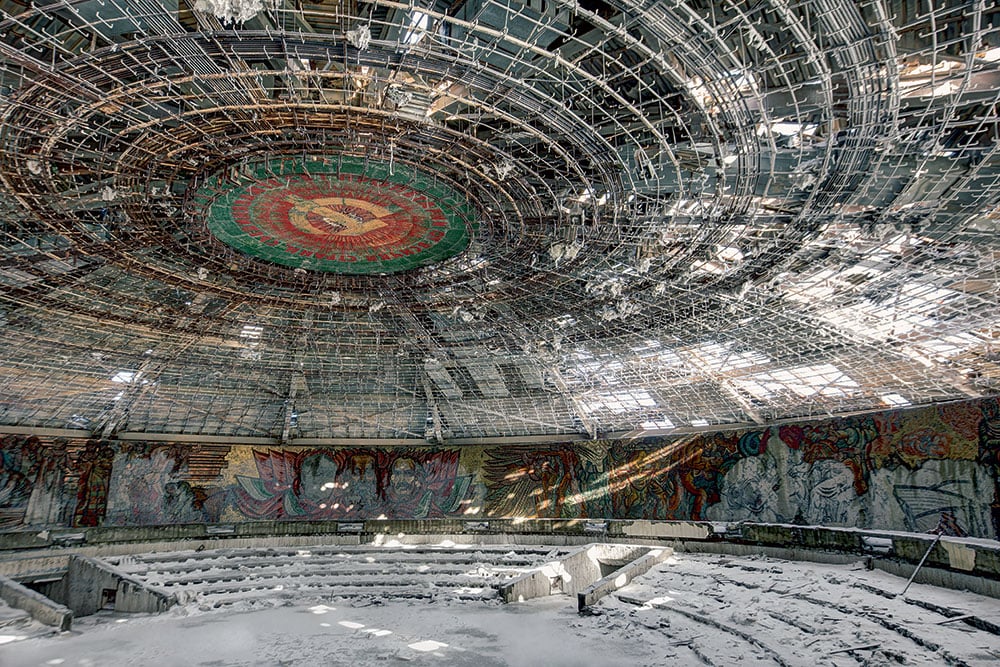Concrete clickbait: next time you share a spomenik photo, think about what it means
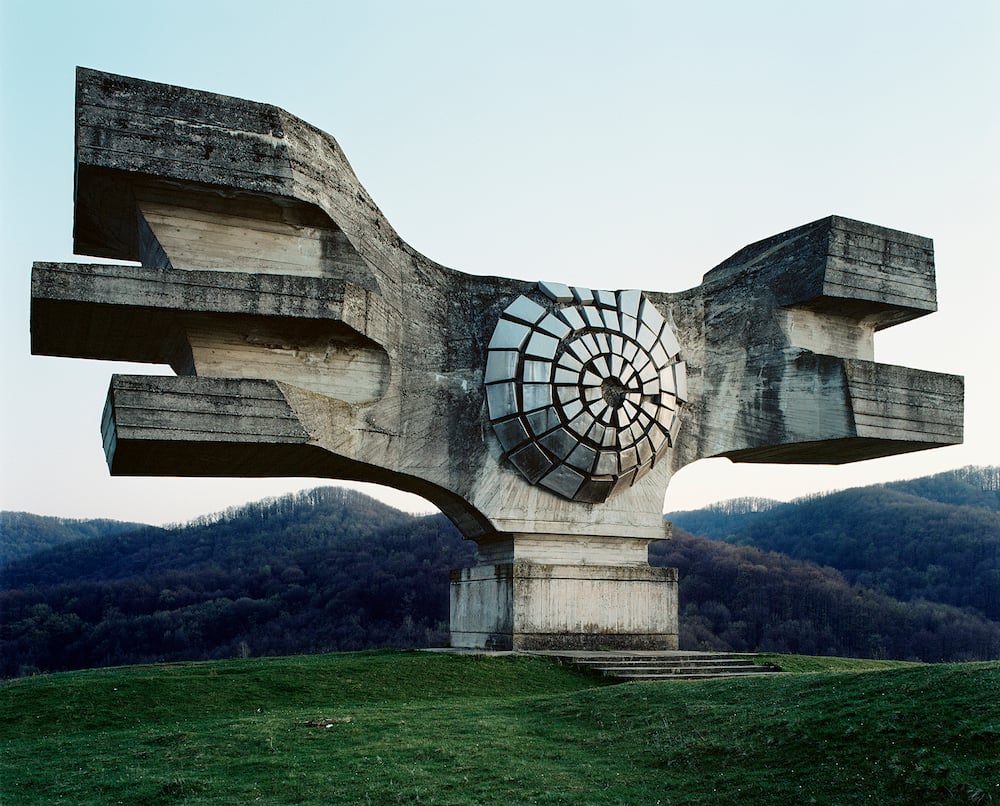
Photos of Yugoslav monuments known as spomeniks are often shared online, exoticised and wrenched from context. But now, argues Owen Hatherley, it is vital that we make the effort to understand what they truly represent
Put the Serbo-Croatian word spomenik into Google Images, and you’ll find dozens of photos of large, seemingly abstract sculptures, of architectural scale, placed in fields, on mountains, and in woods. These are photographs – each of them numbered, thusly – “Spomenik #1”, “Spomenik #2”, and so forth, with locations, but nothing else – by the Belgian photographer Jan Kempenaers. They have been published in a book – of course, called Spomenik – and exhibited around the world.
Recently, in the Guardian, Joshua Surtees described them as follows. “Erected in tranquil fields in the middle of nowhere, Spomeniks – which means monuments in Serbo-Croatian – look like alien landings, crop circles or Pink Floyd album covers.” He continues: “Commissioned by Tito to commemorate Second World War battle sites, they tear down traditional ideas of what a war memorial should be. Tito asked leading architects of the Yugoslav cultural movement, such as Dušan Džamonja, to design them – the British equivalent would be Harold Wilson commissioning Henry Moore to create war memorials and dotting them all over Britain in the least-visited places.” Spomeniks have become a successful brand. However, almost none of the statements made above are true. And in several exhibitions, publications and actions, architects, artists and activists in the countries that once made up the Socialist Federal Republic of Yugoslavia have started to answer back.
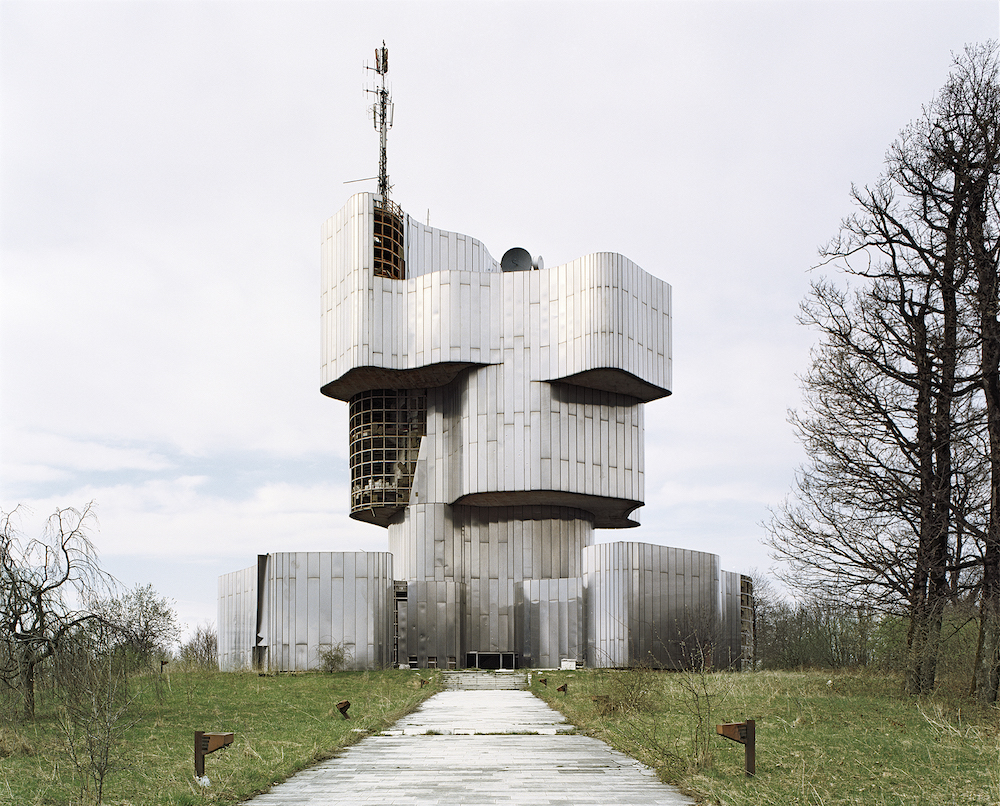
There was no specific call or commission by Tito or the Yugoslav government for monumental sculptures, nor for abstract ones, nor were they all Second World War memorials as such. The sculptures that Kempenaers photographed – and which have since gone into circulation as abstracted images – commemorate a variety of different events. “Spomenik #2 (Petrova Gora)”, of a curved, metal sculpture with several pieces missing, is the “Monument to the uprising of the people of Kordun and Banija”, designed by Vojin Bakic and finished in 1981. It stands on the site where 300 barely armed local peasants were killed fighting against the ferociously violent fascist Ustaše militia in 1942. “Spomenik #5 (Kruševo)”, a bulbous white concrete structure with a walkway through the middle, is the Ilinden Monument in Macedonia, which is dedicated both to the Ilinden Uprising of 1903 against the Ottoman Empire (it contains the remains of one of its leaders) and to local partisan battles in 1941-44; it was designed by Iskra Grabuloska and Jordan Grabuloski in 1974. “Spomenik #6 (Kozara)”, a twisting, tubular concrete sculpture designed by Dusan Džamonja in 1969, is the Monument to the Revolution in Mrakovica, Bosnia-Herzegovina, and is specifically dedicated to the Partisans and civilians – around 70,000 – killed or deported to concentration camps in the area in June and July 1942.
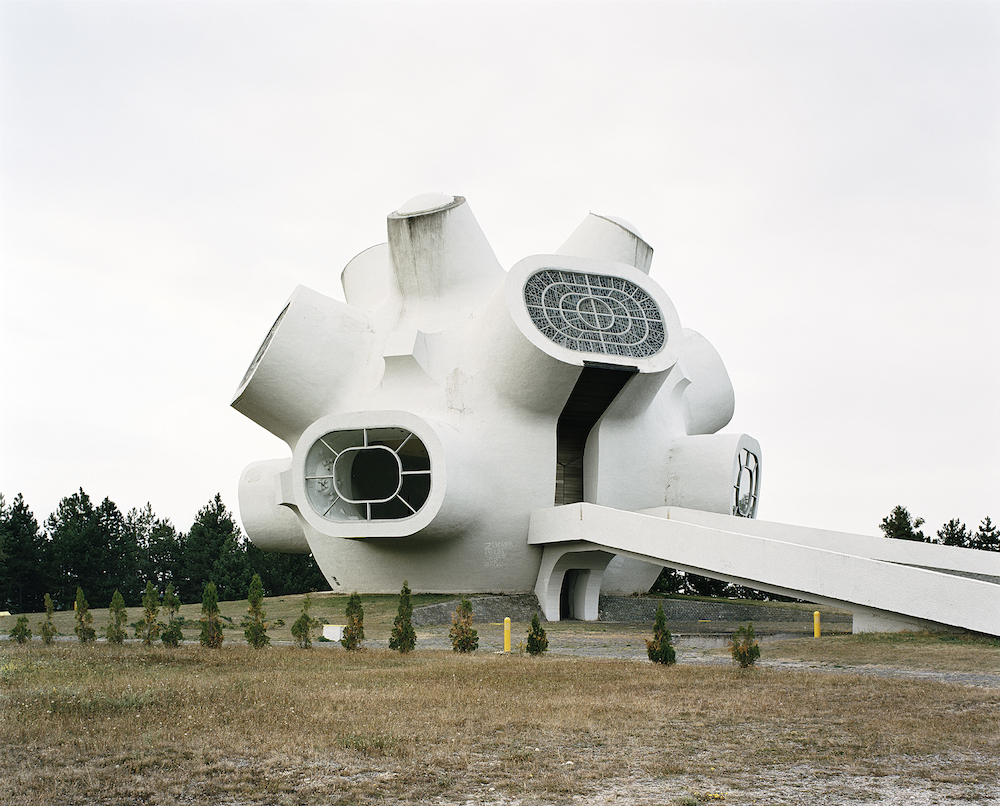
One could continue. “Spomenik #11 (Niš)”, identifiable as three angular raised fists, is the Bubanj Memorial Park in Niš, Serbia, and was designed by Ivan Sabolic, in 1963. It is on the site where over 10,000 Serbs, Jews and Romani were killed by German execution squads. “Spomenik #8 (Jasenovac)”, is “Stone Flower”, by Bogdan Bogdanovic, designed in 1966. It is the central memorial at the largest Ustaše death camp, and was intended as an abstracted, sculptural flower of remembrance. Recently, some of these monuments featured in a project called Totally Lost, which invited contributions of photographs of monuments built by “20th century totalitarian regimes”. Monuments built by the Nazis stand alongside those built by and for their victims. It is comparable to placing a photo of Yad Vashem alongside images of Albert Speer’s Zeppelinfeld, as if they were the same thing.
How have these places transformed from monuments to atrocity and resistance into concrete clickbait?
How have these places managed to transform from monuments to atrocity and resistance into concrete clickbait? The story told by Spomenik is that these strange structures must have just been dropped onto these rural areas, most likely by the Big Man, the dictator, Tito himself. According to Gal Kirn, who has written several articles on “partisan art” and whose book Partisan Ruptures was recently published in Slovenia, the opposite is true. “For these, let’s call them modernist monuments, you would be surprised to see that the financing many times came as a combination of republican (Yugoslavia was heavily decentralised into its six constituent Republics) and regional funds, and also self-managed funding, meaning also that enterprises and factories contributed — while much less was given from the federal-state level.” There were competitions and “some public calls which had juries — but the existence of these progressive sculptural objects tells us that more conventional representations-resolutions were not favoured.” That is, in many cases these “UFOs” were commissioned, funded and chosen locally.
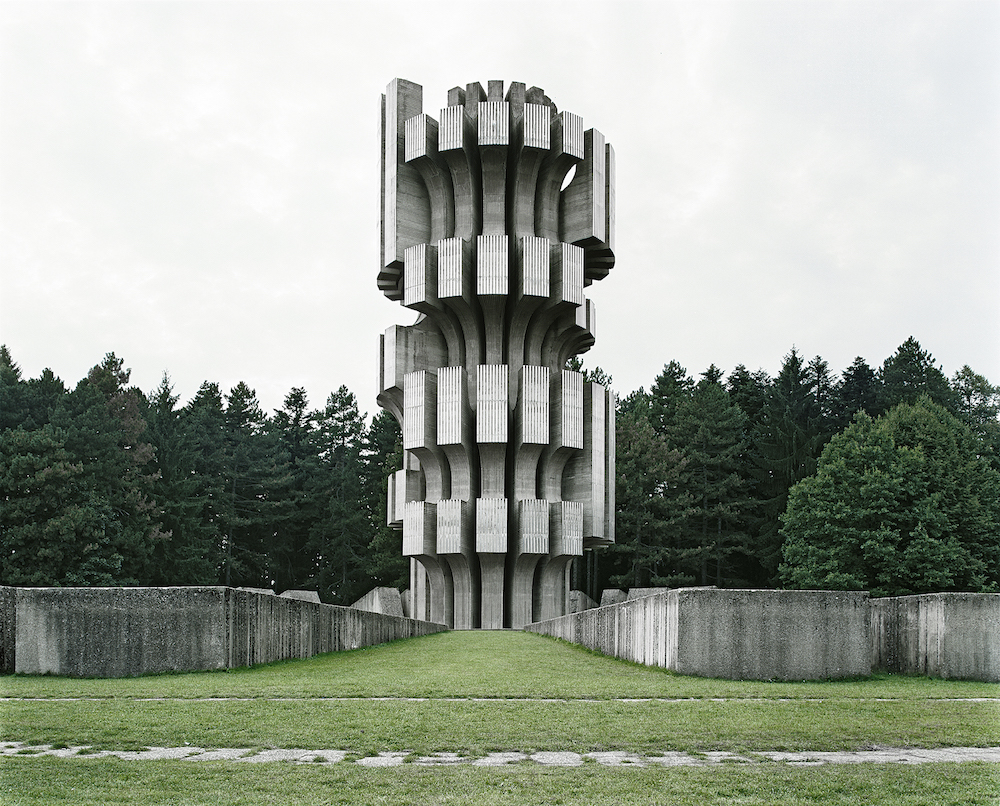
The architect and writer Dubravka Sekulic, who grew up in Niš, location of “Spomenik #11”, points out that while “in numerous blogs where the monuments resurface every now and then they are often called ‘Tito’s monuments’, only the larger schemes were governmental” – others “were really embedded with communities, and were not imposed upon them.” The researcher Tihana Pupovac, who recently co-organised the conference Socialist Memorials and Modernism in Zagreb, points out that the memorials of the region are not always abstract – many were realistic, or contained realist and narrative elements. The shift towards the monumental abstracts photographed by Kempenaers was part of a general shift in Yugoslavia towards an interest in an apparently western modernism. The research conducted by her colleagues Lana Lovrenčić and Milan Rakita for the exhibition Putevima revolucije, on memorial tourism in Yugoslavia, (part of a wider regional project, Inappropriate Monuments) found even that some memorials were looked after by private companies, under the “market socialism” that lasted from the 1960s until the ‘80s.
‘The narrative got reduced to resemblance to UFOs’
Sekulic gives credit where it is due to Kempenaers, for “doing a lot to bring the monuments to the public eye”, and compared to other photographers working in a similar vein, “he doesn’t try to capture them in a really gloomy light, for a start. But at the same time, his book was the start of the exoticization and treatment of them as mute and incomprehensible objects from the past” – a move which also divorces them from “the similar practices that were common on both sides of allied forces after WW2”. In consequence, “all the meaning and content of the monuments get wiped out, and instead of using their resurgence into the public memory to discuss the emancipatory politics of struggle for a more equal society and anti-fascism that was embedded within them, the narrative got reduced to visual resemblance to UFOs”. For Gal Kirn, “the legacy of anti-fascism” in the region “would be even more marginalised” if Kempenaers hadn’t brought its monuments to some sort of public attention. But this is a mixed blessing.
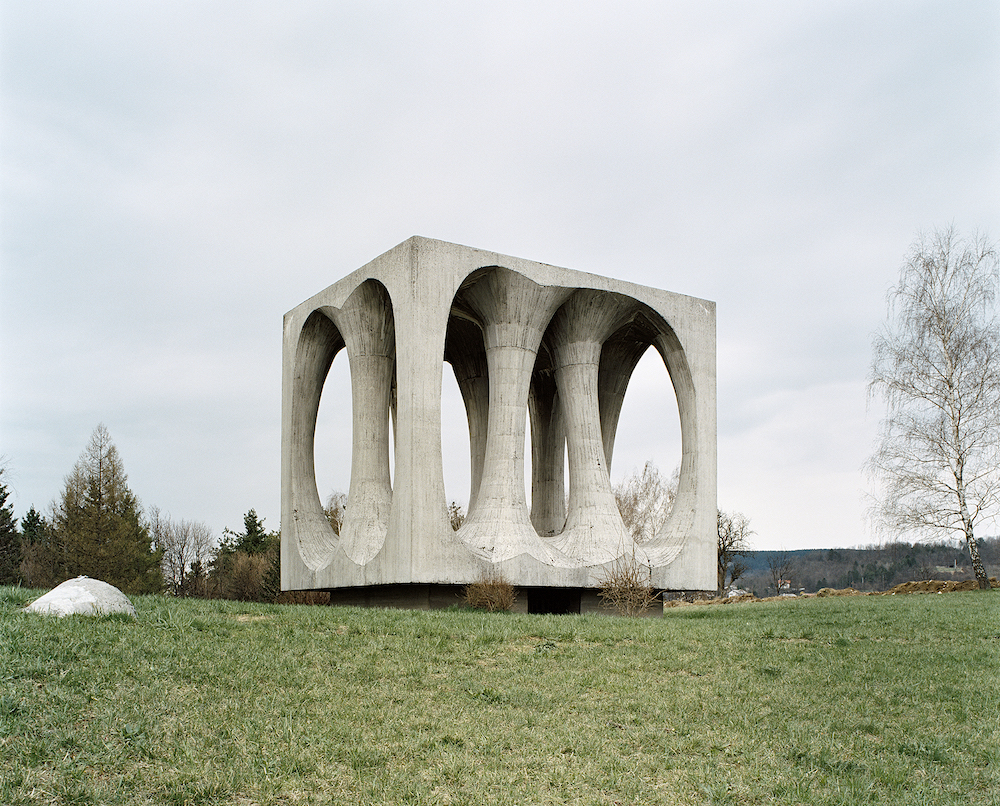
For Tihana Pupovac, a major problem is also the depoliticised framing of the monuments. Left without any indication of what they commemorate, or even of who designed them, the results are “deliberately oblivious” to the anti-fascist struggle that they commemorate, or to why the artists and communities thought they were appropriate – which, once, they evidently did. “If we want to revive whatever we think can be found of politics in the aesthetic of these monuments, we have to go past nostalgia and past the sheer fascination. Because, again, these monuments in themselves are not that unique, what was unique was the lived historical experience of socialism. And I think this is what lacks crucially from Kempenaers’ work. You can see this in the way he presents his work in former Yugoslavia and his total oblivion of the problem of anticommunism. And this makes him incapable of grasping the situation with these monuments today”, which in Croatia, is currently acute, not only with many of the monuments crumbling, but with a right-wing administration openly nostalgic towards the Ustaše and intent on burying whatever anti-fascist legacy might remain today.
‘Our lived historical experience of a revolution becomes only a cultural artefact’
What Spomenik and the like forgets, Pupovac insists, is not only the scale of what happened here – “Yugoslavia was the fourth highest country in Europe in terms of civilian casualties” during the Second World War, and was also, along with Greece, the only country with a resistance movement – the multi-ethnic, Communist-dominated Partisans – that was large and strong enough to liberate the country almost without help from the Allies. The federal Yugoslavia that came out of this broke with Stalin and the USSR in 1948, and instituted a “self-management socialism” of extreme complexity and decentralisation. This is what disappears in the Spomenik photos – as she puts it, “our lived historical experience of a revolution becomes only a cultural artefact”. Sekulic argues that “a better way to engage with these monuments would be to use them as a tool do re-connect to the near past in which as a society we did not see space only as a commodity”. For Gal Kirn, examples of this more thoughtful approach can be seen: for instance, at the Partisan Memorial Cemetery in Mostar, Bosnia-Herzegovina, designed by Bogdan Bogdanovic, where local actions have “(re)activated partisan memory by helping to nurture ties between ethnically divided communities”.
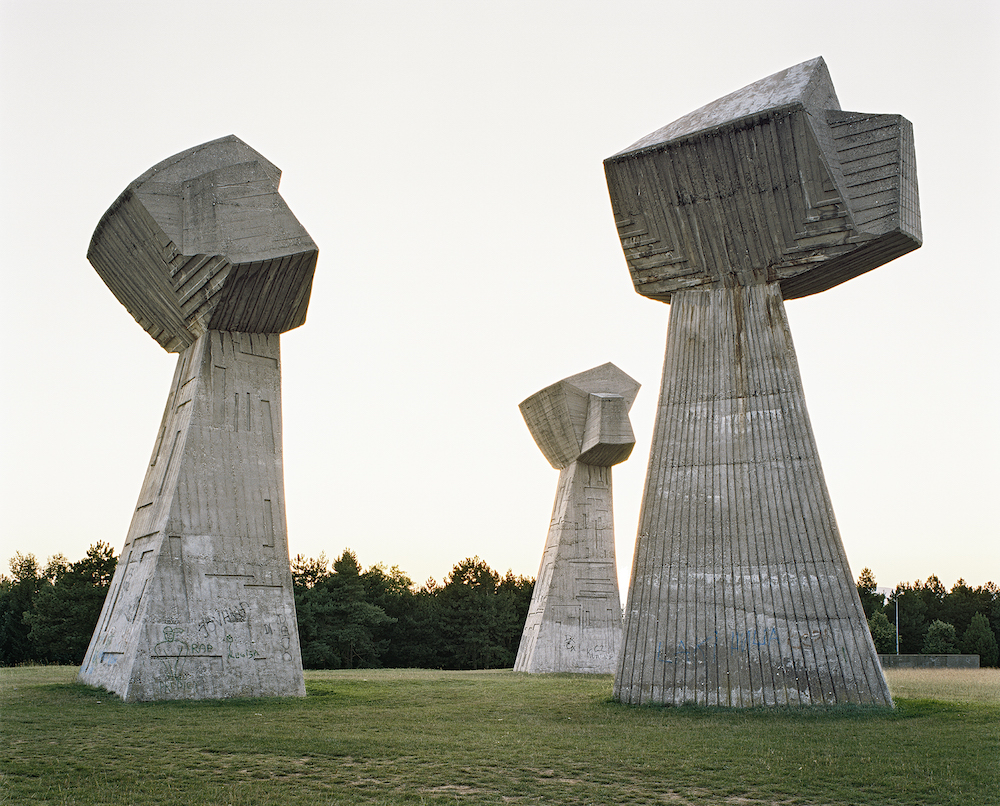
Alongside this, many contemporary artists have made work on these monuments that is considerably more thoughtful. Pupovac points to David Maljkovic’s work in sculpture and film, such as Scenes from a New Heritage, which “asks the question of what is left of the monuments when all of the necessary tools for understanding have been stripped away; and one of the answers is the position that Kempenaers takes — the awe”. By contrast, the work of Siniša Labrović “tried to directly interfere into the political motivation of the iconoclasm that we have witnessed in Croatia by cleaning and wrapping the wounds on one of the sculptures of a partisan that was mined in his home town.” She also mentions the films of Igor Grubić, like Monument, on the vandalism of anti-fascist memorials in Croatia, or the work ofo the Slovene photographer Dejan Habicht, whose images of the Yugoslav landscape are significantly colder and less “alien” than those of Kempenaers. There is, she argues, an Orientalism to Spomenik and work like it – and in the former Yugoslavia, “we need to reclaim our own history through the lens or gaze of the big Other.”
The Yugoslav experience of fighting against fascism has much to tell us
Yet not only in Croatia, but in France, the USA, Britain, real, open fascism – fences, walls, racial laws, deportations, camps – is once again mainstream. The Yugoslav experience of fighting against it on the basis of intercultural solidarity — and, also, of failing to maintain that memory, and of its collapse in the 1990s into resurgent fascism — has much to tell us. These monuments are its concrete legacy, intended to speak of what Yugoslavs had emerged from, how they wanted to be remembered, and what they hoped for. They deserve better than to be glimpsed for a few seconds on Tumblr.
